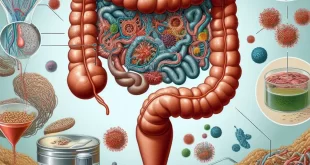Language is one of the indicators that reflect the state of our health: here is a method that can verify this based on its color.
It is advisable to examine your tongue in the morning in natural light before brushing your teeth.
Here are 13 language colors and their meaning:
- Light pink color : this color is the healthiest, it reflects your excellent health.

- Red color : A red tongue reflects infections or deficiencies of vitamins B9 or B12, iron or zinc. However, you must be very vigilant of the intensity of this red, if it is a bright red this should cause concern. A dark red reveals the presence of scarlet fever or Kawasaki disease. This color can also be caused by certain drugs such as antibiotics which modify the intestinal flora.
- Bright red color: A bright red tongue is linked to glossitis, it is a disease caused by an allergic reaction. Glossitis attacks the muscles of the tongue and can even lead to the loss of a high rate of taste buds (up to 50%).

- Yellow color: Generally this color is linked to liver diseases. It also reflects a digestion disorder. Do not hesitate to consult your doctor if your tongue is this color.

- Mauve tongue: This color is closely linked to circulatory problems, possible blood congestion or vein problems.

- Blue tongue: The blue color of the tongue results from kidney problems, hemorrhage, lung disease, or cyanosis caused by too high a concentration of blood which gives it this color.

- Pale pink tongue : This color reflects a deficiency in certain nutrients which contribute to the oxygenation of the blood. Pale pink can also be a sign of anemia.

- White tongue : This color can come from poor oral hygiene, stress, a cold or a diet that is too spicy or too oily.

- Gray tongue: this color can be caused by inflammation, a respiratory problem, a lack of oral hygiene, a weakened immune system, dehydration or even taking certain medications such as antibiotics.

The colors of the tongue coating
The color of the lining of the tongue can vary under the influence of several factors such as: food, drink, medication, or smoking. The color of the tongue and the coating of the tongue are two separate things. A fine white film that could be removed by brushing is completely normal. Only when the thickness of the coating becomes more substantial, this becomes pathological.
Here are 4 different coatings:
- Thick white coating: The white film on the tongue results from a yeast infection called Candidiasis or Thrush. The formation of mushrooms and their development create this color.

- Brown coating: It looks like we drank coffee, and the color is more pronounced in the middle, this may be due to immune, respiratory or smoking problems.

- Yellow coating: Inflammation of the taste buds or excessive consumption of caffeinated drinks or a digestion disorder

- Gray coating: this coloration can result from a bacterial problem, in particular Helicobacter pylori which is the cause of stomach ulcer.

Remember that the color of the tongue is not 100% reliable and that you should consult your doctor.
 medjouel.com Study Non Stop
medjouel.com Study Non Stop



